The Decisive Moment – Henri Cartier-Bresson
Cartier-Bresson offers marvelous observations on the art of photography.
View more photographer’s videos here.
Read conversations with photographers here.
Cartier-Bresson offers marvelous observations on the art of photography.
View more photographer’s videos here.
Read conversations with photographers here.
Chris Orwig delivers an inspring Google Talk about how photography fuels innovation.
Read/view more about Chris on this blog, including his TED talks here.
View more Creativity Videos here.
This video offers insights into an inimitable icon in photography.
View more Videos On Photographers here.
Read conversations with photographers here.
This video offers many insights into and from one of the most influential color photographers of our times.
View more Videos On Photographers here.
Read conversations with photographers here.
“He is one of the most influential and innovative photographers in the fashion industry and one of the first to elevate his craft into a true art, dominated more by the artist’s vision than the subject itself. This documentary tells his story. With an eclectic blend of biographical information, his work, and his commentary upon it, the film tells his story in a non-linear way. Highlights include his description of how he got a teen-age Natassja Kinski to pose naked with a large python crawling across her body and his memory of the night Marilyn Monroecame to his place and danced for hours while he photographed.” – Sandra Brennan Rovi
View more Videos On Photographers here.
Read conversations with photographers here.
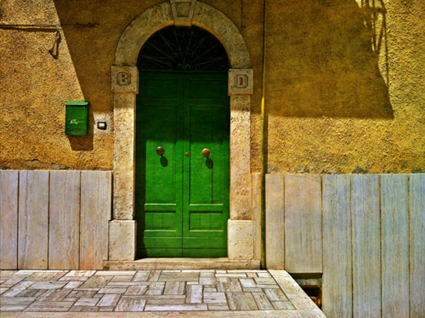
If you’d like to use HDR techniques for your mobile photographs you’ve got choices. Moving from simple and limited to more complex and robust, consider these three: first, the iPhone Camera app’s built in HDR function; second, the app Pro HDR; and third the app TrueHDR. I use all three, moving from one to another as the contrast of the scene increases.
The strength of HDR renderings and the artifacts they tend to produce can be varied to suit individual tastes. Regardless of whether you favor a light touch or a heavy hand, if you photograph, with or without a smart phone, sooner or later you’ll need HDR. It’s an essential technique …
Read more on The Huffington Post.
Learn more in my digital photography and digital printing workshops.
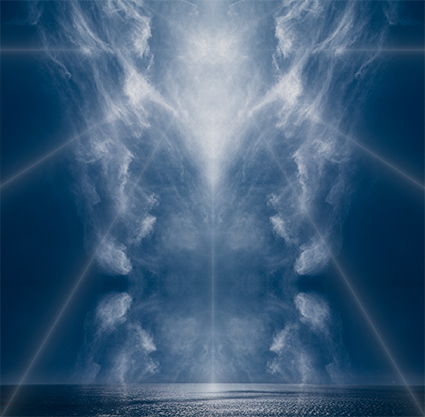
Here are my favorite quotes by photographer John Paul Caponigro.
“A good question has many answers.” – John Paul Caponigro
“It takes asking many questions from many perspectives to truly understand something.” – John Paul Caponigro
“Inquiry is more important than answers, for it is the questions we ask and the way in which we ask them that defines us.” – John Paul Caponigro
“How do we know what we know? Is seeing believing? Is believing seeing?” – John Paul Caponigro
“The most important question is, ‘Am I asking the most important question?’ The second most important question is, ‘Am I asking the most important question in the most important way?'” – John Paul Caponigro
“Don’t ask “‘Should I …?’. Instead, ‘Ask what happens if I …?'” – John Paul Caponigro
“Action tests ideas.” – John Paul Caponigro
“It’s one thing to record the appearance of something, it’s another to share what it truly means to you.” – John Paul Caponigro
“Capturing the light reflected off things is different than being captured by them.” – John Paul Caponigro
“Seen from one perspective, photography is much more about elimination than inclusion. The images we make with a lens typically eliminate eighty percent of our field of view and everything that is out of our field of view. The shutter slices time, eliminating all moments before and after it opens and closes. Three dimensions are reduced to two. And in some cases color is removed. Can we accurately call these kinds of artifacts unaltered? The act of creation is an alteration.” – John Paul Caponigro
“Every photograph is altered, to one degree or another.” – John Paul Caponigro
“Images are altered in many ways, to many degrees, and for many reasons, so it’s important for viewers to be informed of both.” – John Paul Caponigro
“It’s important that we regularly reconsider, revise, and expand our practices, as our capabilities and needs evolve, both to strengthen our understanding of them and to promote our awareness of new practices and their conscientious uses.” – John Paul Caponigro
“We don’t have enough words for photography. Can you imagine writers having only one word for writing?” – John Paul Caponigro
“Listen carefully. The way(s) we speak about things is revealing.” – John Paul Caponigro
“Many times we are tempted to defer to the documents we create, rather than the direct experiences we have.” – John Paul Caponigro
“Very often there is too little information in photographs to deduce how they were made and even what they represent. We rely on context and supplemental information to confirm our observations, not simply the documents themselves.” – John Paul Caponigro
“Different people can photograph the same things with the same tools and create such different images.” – John Paul Caponigro
“We are the strongest filter we can place on the lens. We always point the lens both outward and inward.” – John Paul Caponigro
“We’re responsible for everything that’s included in the frame. We’re also responsible for what’s not included in the frame. We’re responsible for the way we frame the world.” – John Paul Caponigro
“The frame frames a frame of mind.” – John Paul Caponigro
“We see the world through our experience.” – John Paul Caponigro
“Photography extends our perception allowing us to see and experience more – second hand.” – John Paul Caponigro
“Photographs are never records of the way things are; they’re records of the way things were.” – John Paul Caponigro
“Surfaces simultaneously reveal and conceal.” – John Paul Caponigro
“All photographs are about light. The great majority of photographs record light as a way of describing objects in space. A few photographs are less about objects and more about the space that contains them. Still fewer photographs are about light itself.” – John Paul Caponigro
“A photograph is an invitation to look – and to look at looking.” – John Paul Caponigro
“Many oriental cultures make a distinction between two ways of looking – ‘hard eyes’ and ‘soft eyes’. When we look with hard eyes, we see specific details with sharp focus, but we don’t see the relationships between different details as well. When we look with soft eyes we see the relationships between everything in our field of vision, but with this softer focus, we don’t see all the details as clearly. It’s possible to look in two ways at once.” – John Paul Caponigro
“Looking and seeing are two different things.” – John Paul Caponigro
“Seeing creates growth.” – John Paul Caponigro
“The best plans evolve.” – John Paul Caponigro
“We talk about the vulnerability involved in sharing our work publicly. I don’t think we talk enough about the real vulnerability involved in making art; if we truly engage the process we are changed by it.” – John Paul Caponigro
“Art is a journey of discovery.” – John Paul Caponigro
“Through the experience of art, the powers of perception and transformation can be awakened, in both those who create it and those who re-perceive it.” – John Paul Caponigro
“It’s one thing to make a beautiful thing; it’s another thing to make a living thing.” – John Paul Caponigro
“My mantra is, ‘This or something better.'” – John Paul Caponigro
Read our conversation here.
Read more photographer’s quotes here.
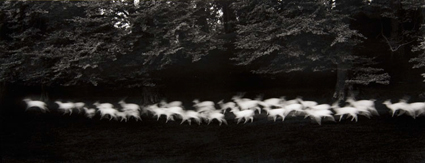
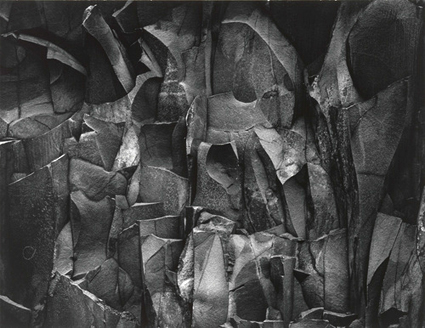
Here’s a selection of my favorite quotes by photographer Paul Caponigro.
(My father has a lot to say about the creative process!)
“Photography is a medium, a language, through which I might come to experience directly, live more closely with, the interaction between myself and nature.” – Paul Caponigro
“I often see the materials of photography as being a type of terrain. Emulsions, liquid developers, silver salts, and fixers interact, and I construct a landscape that I need to first explore in my mind’s eye if I am to make it manifest as an artful image in silver.” – Paul Caponigro
“Photography’s potential as a great image-maker and communicator is really no different from the same potential in the best poetry where familiar, everyday words, placed within a special context, can soar above the intellect and touch subtle reality in a unique way.” – Paul Caponigro
“The key is to not let the camera, which depicts nature in so much detail, reveal just what the eye picks up, but what the heart picks up as well.” – Paul Caponigro
“Some of my photographs have always been a mystery to me in terms of how I arrived at them. Even with the technical ability to produce fine prints, I am hard put to know how it happens, yet unless technique and materials are seriously investigated and experienced, I see that moving statements are seldom made. The process of photography ever invites me. I hope never to lose this feeling. At times I make photographs for the sheer magic of its process, and the good feeling about the very stuff needed: light, chemical combinations, some imperceptible forces at work behind the scene. I am part of the drama which takes the guise of photography.” – Paul Caponigro
“The influence of mystery is the greatest influence.” – Paul Caponigro
“Keep alive the fact that a mystery has come into existence and that a physical being serves as a house for this mystery.” – Paul Caponigro
“At the root of creativity is an impulse to understand, to make sense of random and often unrelated details. For me, photography provides an intersection of time, space, light, and emotional stance. One needs to be still enough, observant enough, and aware enough to recognize the life of the materials, to be able to ‘hear through the eyes.” – Paul Caponigro
“… the effort, diligence, and care required in practicing must be quickly suspended when pressure coming from anxiety or a desire for fast results causes them to degenerate.” – Paul Caponigro
“Under all of the factors that make up the art world, it’s up to the individual artist to discern which of those influences are present and at what time and what really serves the deeper process that is constantly running like a stream underground. Influence is incessant. Influence is a fact. But, carry a big shovel and dig constantly to clear away all the unessentials so that the origins of mystery and the poetic force of life can get into and inspire the work.” – Paul Caponigro
“Photography attracted me before I ever knew that it was a part of a structured world. I saw a camera which my grandmother wielded. I thought it was fascinating. I didn’t know about famous artists and museums and magazines. I innocently met that process. And I excitedly engaged it to the best of my ability. Later, because my excitement was so strong, I realized that this could be a medium through which I could work. Then I had to meet the whole world of photography; manufacturers, materials, hype, galleries, dealers, critics, etc. Somehow I did not lose sight of that initial innocence. I realized that unless I could stay free, unidentified, unless I could keep my personality from going crazy with the adulation or the lack of it I was not going to maintain that innocence. I realized that the innocence was the important state that called forth the inspiration into the process.” – Paul Caponigro
“The only way a work of art can become great is for one to acknowledge that it doesn’t belong to anybody. The greatness is in constantly giving back, coming to an acknowledgment of the source. Look back to the source of any individual, any process, any set of materials. If the individual personality can relinquish its insistence on concepts like “this is mine”, “I did it”, “this is original”, “nobody else has done it”, it goes straight for greatness or the essential spirit.” – Paul Caponigro
“If you are engaging rationality, you are already engaging a place that makes you unavailable. Only when I recognize that inspiration has announced itself to my availability will I then say I need to use my mind to calculate exposure, my emotions to position myself and arrange a configuration of shapes that need to come into being, my body to put it all in place because we have been given a message and it has come through inspiration through being available.’ – Paul Caponigro
“Being available is very important. I’ve spent a lot of time working in the British Isles at so called pre-historic sacred sites. I quickly realized that I wasn’t going to go there and force a composition or extract any kind of typicality to make pictures which were expected by the audience within the world of photography. I could have been quite clever and made very pleasing pictures. But I was affected by being available to those sites a few times. When I dropped all those concerns, mentally, emotionally, physically, I was available. I was free in those areas. I didn’t think, “I’ve got to get the ultimate in composition today.” or “I’ve got to get the ultimate in light, I’ll stay here until it appears.” I was not making any demands. I went purely to see what would come, what might be there. I didn’t have to be archaeologist or historian or tourist, I just needed to be available.” – Paul Caponigro
“As far as my experience goes one is automatically in touch with the higher spiritual, it is connected to a certain level that interpenetrates our total physical and psychic existence. We are always in touch with it.” – Paul Caponigro
“Can you keep your balance? Can you see what and where you are at any given moment?” – Paul Caponigro
“I use my music to tune myself.” – Paul Caponigro
“Seek freedom within action.” – Paul Caponigro
“Work incessantly, cultivate discrimination, gather freedom from your own hard-earned results. Disregard successes but go back for help in an immediate problem. The possibility of discovery is everywhere. Freedom from your own work allows for intuition that draws from all your experience and perception but goes beyond it.” – Paul Caponigro
“Recording the light of the outer subject can be linked with gaining access to one’s inner light.” – Paul Caponigro
“All that I have achieved are these dreams locked in silver.” – Paul Caponigro
Read more photographer’s quotes here.
View photographer’s favorite quotes here.
Read our father/son conversation here.
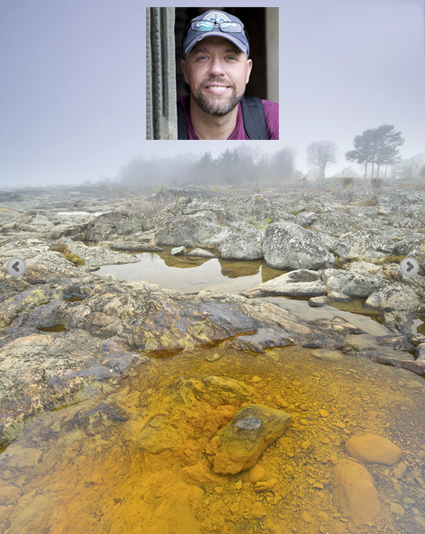
David duChemin provides quick candid answers to a 20 questions.
What’s the best thing about photography?
The best thing about photography is the gift of seeing – really seeing – the moments in life that otherwise pass so quickly. It’s the elevation of what we normally see as mundane, or perhaps not the elevation of it so much as the recognition that it was beautiful to begin with.
What’s the worst thing about photography?
Like any storytelling medium or art, it’s easy to fall more in love with how we tell the stories than the stories themselves. I think photographers have an unusual relationship with their gear, one that can be beautifully collaborative or strangely incestuous.
What’s the thing that interests you most about other people’s photographs?
I like to see through the eyes of others, to see what I have not. I’m a very curious person and this gives me a glimpse into a world in ways I’ve not considered it.
Who were your early photographic influences?
My earliest were portraitists, like …
Read the rest of David duChemin’s Q&A here.
Read other Q&A’s by other top photographers here.
Read a selection of David duChemin’s favorite quotes here.
Read other top photographers favorite quotes here.
Preview his new online course The Compelling Frame now.


Read the story behind these two photographs made by two very different photographers here.
When Seth Resnick and I started Digital Photo Destinations workshops, many people thought we were an unlikely combination. His mode of photography is active and mine’s contemplative. He photographs everything; I focus on specific things. He’s all about workflow and releases thousands of images a year for stock agencies. I’m all about print quality and release fewer than a hundred images a year for exhibition. We find our differences extremely stimulating. We encourage each other to try new things and our contrasts provide new clarity about our individual natures. Our collaborations are fueling new personal growth for both of us – and for our participants. Our adventures take us to amazing places – Antarctica, Argentina, Greenland, Iceland, Namibia and more – to do some amazing things; glacier walks in ice caves before watching auroras, helicopter rides over volcanoes, zodiac rides through ice fields, hiking the world’s largest dunes … what will be next? On the personal front, we laugh (and so do others) because we’re so similar we can often finish each other’s sentences. The most stimulating relationships are born when there’s something shared and something different. This combination stimulates growth in both individuals. Imagine who that person could be for you.
We just wrote a piece for B&H on the many benefits of sharing photographic experiences.
Read it here – you’ll enjoy it!
Find out more about Digital Photo Destinations workshops here.